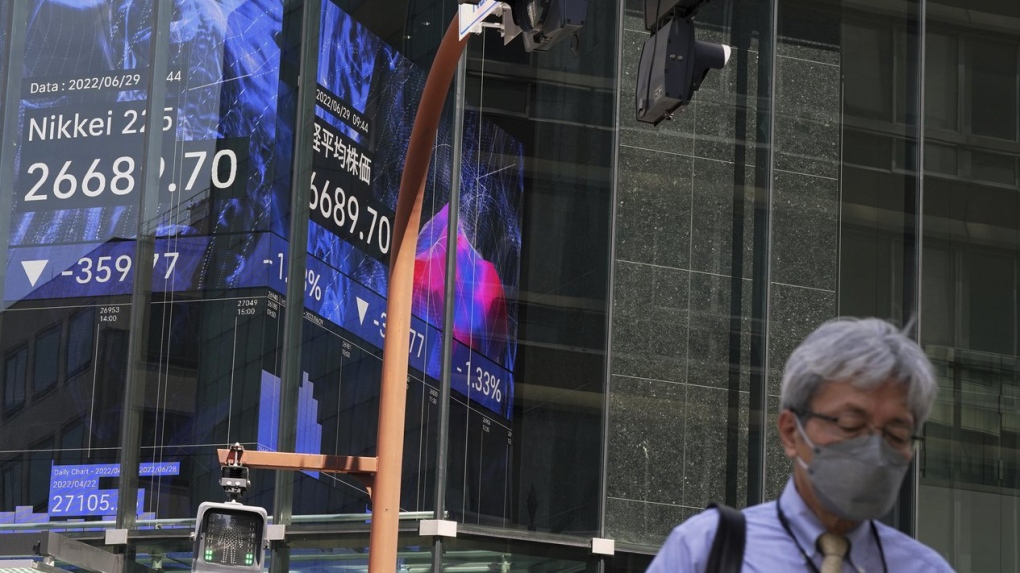Contents
Katherine Myers and her husband Ben are fifth-generation potato farmers.
Key points:
- AEMO says five new transmission line projects should be progressed “as urgently as possible”
- Many experts and investors say the grid needs upgrading to meet renewable energy targets
- Hundreds of people in a regional Victorian community are campaigning against lines set to go through their town
They live with their children in western Victoria, where a renewable energy transition is underway, and like the majority of Australians, care deeply about preventing climate change.
However, there’s one aspect of the transition to renewables that stands to jeopardise their operation: An upcoming energy transmission project will see high-voltage powerlines built through their farm.
Once the lines are up, Ms Myers is worried her family will not be able to irrigate or use aircraft to spray the crops.
“This paddock here is … growing certified seed potato for the rest of our industry,” Ms Myers said.
“This paddock won’t be suitable for growing potatoes once the transmission line goes through.”
The Myers family are among hundreds of people in Daylesford and surrounding areas that are campaigning against huge transmission lines set to go through their town, 140 kilometres north-west of Melbourne.
Those overhead wires — and the transmission towers to carry them — are part of a plan to create a big, renewable energy hub in Western Victoria, delivering zero-emissions electricity to Melbourne, a project the energy market operator has now deemed “imperative” to Australia’s energy future.
“Renewable energy is absolutely essential. It’s the way we’re going forward,” Ms Myers says.
“It’s just the importance of getting that relationship between protecting our food security and managing the introduction of renewable energy.”
‘Congestion’ in the energy grid
The Labor government has a plan to increase the share of renewable energy in the grid to 82 per cent by 2030.
“It’s a very ambitious agenda,” says Simon Corbell, a former Labor deputy chief minister of the ACT who now represents renewable energy investors.
“But it needs to happen and we will need to mobilise all of our resources across both the public and the private sector to make it a reality.”
However, many industry specialists and investors say that getting to 82 per cent renewable energy will only be possible with a major upgrade of the poles and wires that transport that power around the country.
Renewables investor John Martin knows that better than anyone. After years working in finance, he started investing in renewable energy in 2017 and has overseen the development of dozens of large projects in Australia, the US, Africa and elsewhere.
When he started out as chief executive of New Energy Solar, he had planned to develop half of his assets in Australia and half in the US. But the state of the Australian transmission network meant that never came to fruition.
“We built 59 solar farms in my investment business and only two of them were in Australia,” says Mr Martin, who is now the chief executive of Windlab.
“We spent more time managing the issues around those two projects than we did across all 57 in the US.”
He says one solar farm in the Central West of NSW — Manildra Solar Farm — encapsulates the problems with transmission in Australia.
His previous investment business, New Energy Solar, built the farm in 2018, and at first everything was perfect.
“I always say this is one of the prettiest renewable energy projects I’ve worked on. And, up until recently … one of the best-performing ones I’ve been involved with,” he says.
However, soon after it was commissioned, the Australian Energy Market Operator (AEMO) began telling the operators they were not allowed to put the electricity it was producing into the grid.
It’s a problem called “congestion”: The poles and wires in that part of the network simply were not up to scratch and could not safely transport the energy.
“Plenty of power is being generated by renewable energy resources with simply not enough transmission capacity to get it to load,” Mr Martin says.
So New Energy Solar sold the farm to Banpu energy, in part because of the congestion problem.
The new owners say that, during periods of peak production, 60 per cent of the energy is simply wasted.
John Martin said that was why he and many other investors have not built more renewable energy in Australia.
“It’s just too risky. If you generate renewable energy and it’s going to get wasted, why invest here? Why deploy capital here?” he said.
Mr Corbell said that, if the government fixed the transmission network, investors would flock to the market.
“The number-one issue facing investors that the new government needs to address is access to transmission,” he said.
Bringing communities on board
That message was heard by Labor before the election, and is now central to the government’s climate plan.
“The missing piece has been transmission: getting the energy from where it’s produced to where it’s going to be consumed,” federal Climate Change and Energy Minister Chris Bowen told the ABC.
Rather than focus on subsidising renewable energy generation, the government is investing $20 billion in modernising the transmission network.
That money is intended to help get 10,000 kilometres of transmission lines built, which AEMO said was urgent and essential for unlocking renewable energy zones around the country.
However, it’s that massive rollout that could leave the government at loggerheads with communities like the one the Myers live in.
Most of the community there want the transmission wires buried underground where they will be out of sight. They say underground transmission will be safer in the event of severe weather and bushfires, and will have less impact on farming.
Ausnet, the energy company proposing the transmission lines in western Victoria, told the ABC it will continue to work with impacted communities to “understand their priorities and how local benefits can be incorporated into this project”.
“The project is continuing to investigate partial undergrounding options as part of the Environment Effects Statement, which will be lodged later this year,” the statement said.
Few communities would be happy with giant transmission lines cutting through their streets, fields or forests, and Minister Bowen says he understands consultations with communities need to be improved.
“Communities think, at the moment, that when they’re consulted, it’s basically a fait accompli: The decision’s already been taken as to where the lines will go,” he said.
“And you know what? They’re often right.”
Energy shift one of Australia’s ‘biggest changes’
Everyone the ABC spoke to for this story — politicians, investors and community members — said Australia needed to overhaul the regulations governing how transmission projects are decided.
The most significant change needed, they said, relates to the regulatory investment test for transmission (RIT-T), which outlines the considerations for a proposed transmission project.
Before the election, Labor promised to change that, and Minister Bowen said that was still a priority.
“I’m absolutely determined that we improve the process,” he said.
“It was designed for small additions to transmission, not for the sort of transformation [increment] that we need to undertake across the country.
“It’s more important than ever that we do get it right.”
Minister Bowen said navigating these issues was essential as Australia headed towards net zero emissions.
“It’s one of the biggest changes our economy has ever contemplated having to do,” he said.
Mr Martin said he was optimistic the government’s targets would be beaten.
“We’ll meet the three magic goals: We’ll have much-lower cost electricity than we’re seeing at the moment. It’ll be far more reliable and we’ll be supporting decarbonisation,” he says.
“And I think in the next 10 years we can really crack this in the electricity industry.”
Posted , updated



